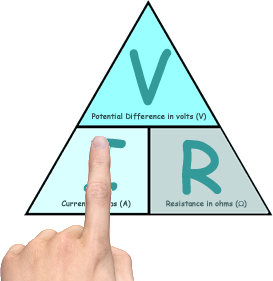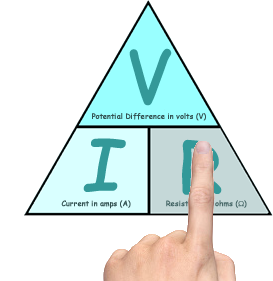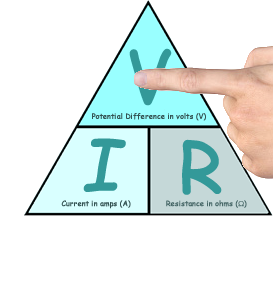Ohm's Law (V = IR) In the first half of the nineteenth century a German scientist named Georg Ohm performed many experiments which resulted in him being able to show that there is a mathematical relationship which links current, voltage and resistance. In the days when he was performing his experiments there were no meters as we know them today. Only after considerable effort and at the second attempt did he manage to devise what we know today as Ohm's Law. Ohm's Law is one of the most fundamental and important laws governing electrical and electronic circuits. It links
If two are known, the third can be calculated. How to use the Ohm Triangle
|
Follow me...
|



 You 'cover' the unknown value with your finger = the triangle then shows you how your two known values are related,
You 'cover' the unknown value with your finger = the triangle then shows you how your two known values are related,





